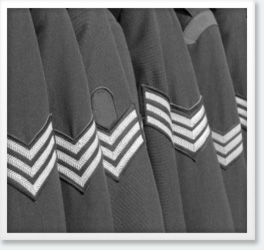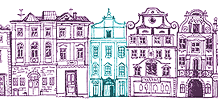Armed Forces & World Wars
British Armed Forces
World Wars
World War Two - Introduction
The conduct of the Second World War was different from the First war in several ways. First it was a truly global conflict - British servicemen fought and died across the world - and secondly it was very mobile with campaigns covering hundreds of miles often in a few short weeks. There were also considerable technical innovations in designing and building new aircraft, tanks and ships, for example, and in intercepting Enemy communications.
Soldiers in World Ward Two

All in all just under six million men saw service in the Armed Forces. The Army was made up of a much smaller proportion of men in uniform than had been the case in the First World War. In July 1945, nearly three million men were serving in the Army compared with a million in the Royal Air Force, and 780,000 in the Royal Navy. Conscription was introduced on the outbreak of war in September 1939. Eventually all men and women between 18 and 60 were required to undertake some form of national service, although by no means everybody served in the armed forces. However, one and a half million men volunteered without waiting for their call-up papers.
The experience of men in the forces was also different. Perhaps the main one is that most soldiers during the Great War saw active service at some stage. By the Second World War, however, technological advances meant that many more soldiers were involved in supporting the infantry than saw action themselves - what Churchill called the "fluff and flummery behind the fighting troops". It was estimated that 60,000 men were now needed to keep an infantry division of 20,000 soldiers supplied with equipment, patrol and food. For much of the time between 1939 and 1945, the experience of war for many men was not one of daring deeds at 'the sharp end', but rather of a sedentary existence in camps or depots across the country, filling forms or passing ammunition to troops in the front line.
Casualties in World War Two

Some 305,800 British servicemen and women (it was the first war in which women played an active role within the services) were killed and another 280,000 wounded. (Army 177,000; Royal Navy 51,600, RAF 76,300). Again losses would have been much worse had it not been for the excellent medical services and the introduction of new medical techniques such as blood transfusions.
Even so, the fighting in North-West Europe in 1944 and 1945 was as deadly as anything experienced during the Great War. But the worst casualties were in Bomber Command, which saw extremely high losses: 55,573 killed out of a total of 125,000 aircrew (a 44 per cent death rate),

